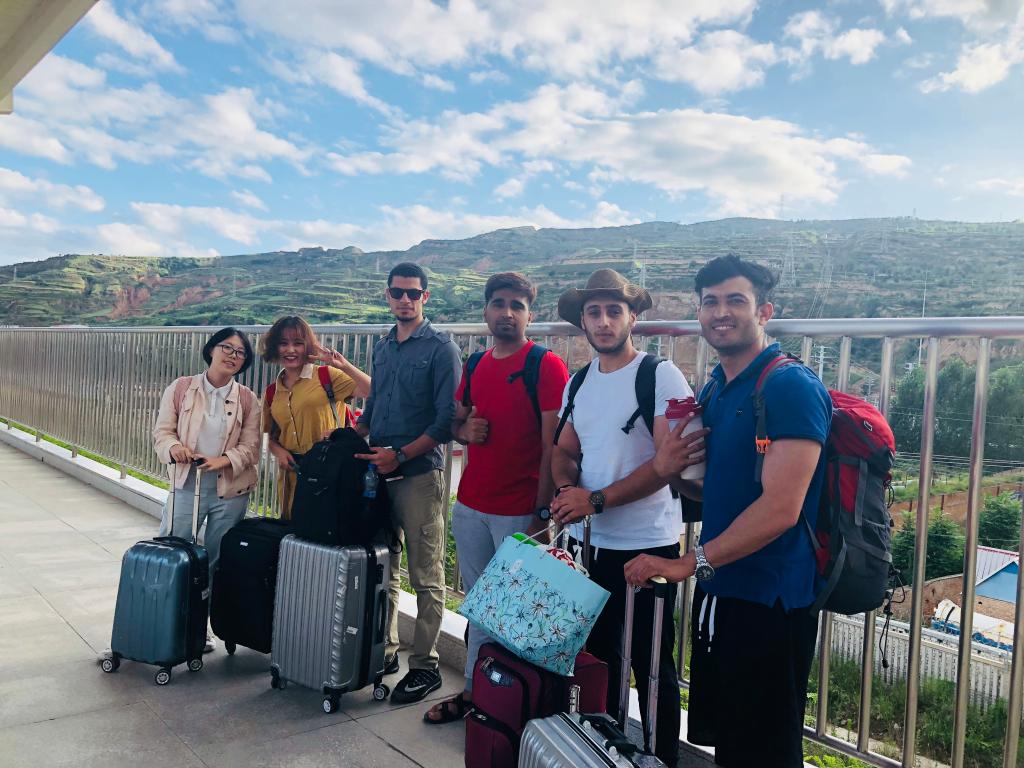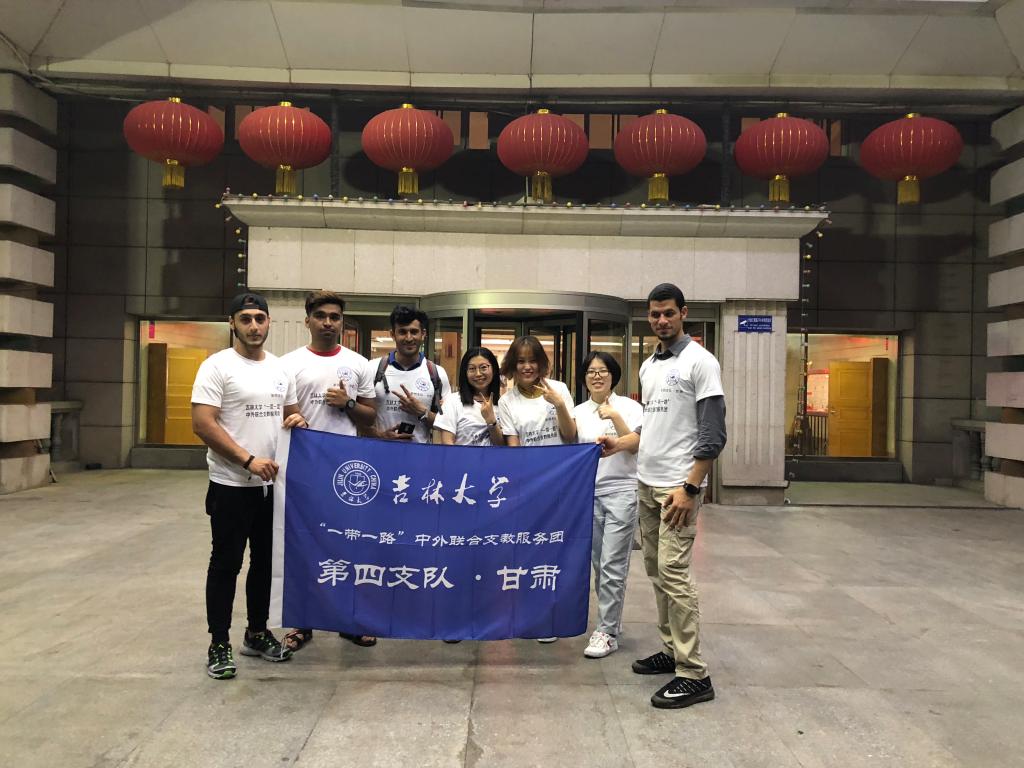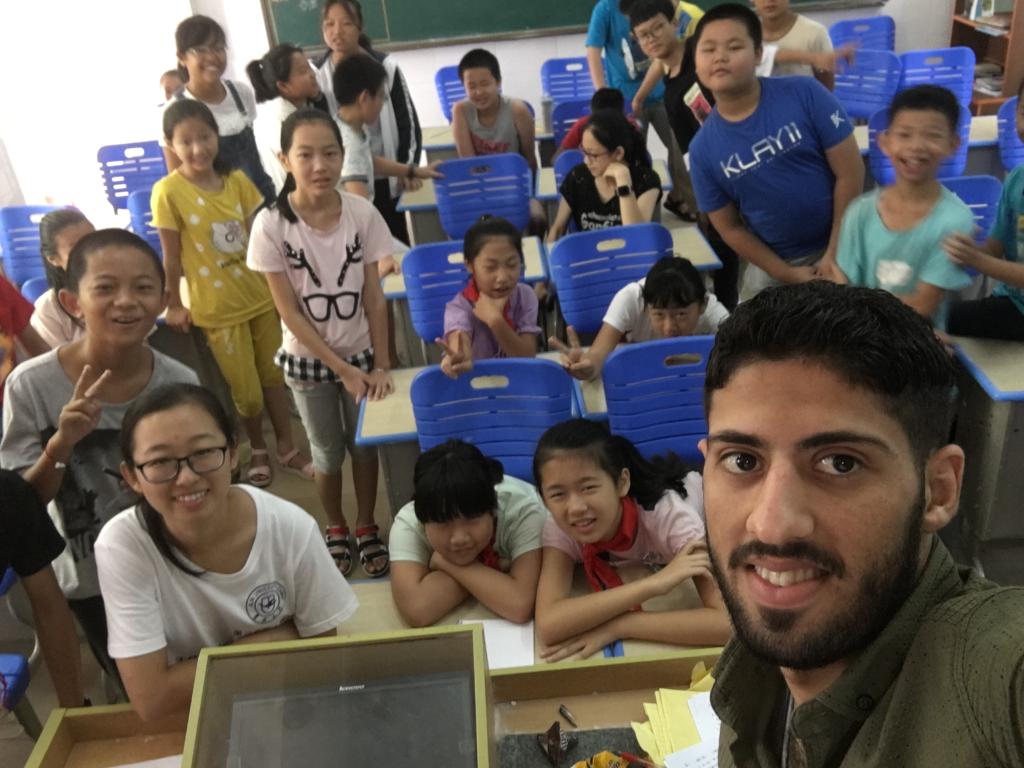During 2018 summer vacation, 3 JLU “One Belt and One Road Initiative” Joint Volunteer Groups, consisted of 12 int’l students some Chinese students, launched a 17-day joint educational program and survey, respectively in Qinchua, Gansu Province, which is along the ancient “Silk Road”, Qianxinan Miao Nationality and Buyi Nationality Autonomous Prefecture, Guizhou Province, and Quanzhou, Fujian Province – the starting point of “Marine Silk Road”. This program was jointly run by JLU Youth League Committee, College of Int’l Education and Supporting Education Association Concerning Sinology and Foreign Cultures-Jilin University.
37 int’l students from 8 countries had applied for the program. After the interview, 12 volunteers were selected, including 5 undergraduates, 3 master candidates and 4 PHD candidates. They had come from countries along the “One Belt and One Road”, such as Egypt, India, Pakistan, Iraq, Ghana, etc. With JLU’s care and concern, they went to the remote areas in China.




According to their own cultural features and knowledge structure, the volunteers taught the children some cultural courses, including the history and culture of countries along “the One Belt and One Road”, folk cultures and customs, geography, art, language and security class. Besides, they also taught practical courses, such as music, dancing, PE, etc.




During the program, the volunteer teachers and the children became very good friends and both broadened international horizon, enriched knowledge and gained experiences. Bakht Shahzad, a volunteer teaching in Hengshui Anlong Experimental Middle School in Guizhou, was deeply touched by this program. He said he would never forget the time when he studied and discussed with the children in and after class. The program greatly deepened his knowledge about China. He felt the pure happiness from the friendship he developed with local students and teachers. If given another chance, he would join such a meaningful program again.






In terms of the survey, 3 volunteer groups had a series of surveys, respectively in Guiyang City, Quanzhou City and Tai’an County, about the museums, schools, parks, ethnic minority communities, historical sites, etc. The volunteers investigated about the protection of cultural heritage, ancient Chinese history and geological culture, “Red Education”, customs of ethnic minorities, etc. With these surveys, the influences of “The One Belt and One Road Initiative” was further expanded. The int’l students gained more insight into China’s history, culture and economic development. Knowing more about the Initiative, students from different countries bridged the gaps between each other and understood, communicated and exchanged on a higher level.
Int’l Students and Chinese Students Joint Volunteer Groups is a good platform on which student from home and abroad communicate with each other. By teaching and surveying in China, int’l students get to know more about “the One Belt and One Road Initiative”, and feel by themselves about an opening and inclusive contemporary Chinese society. Working outside of campus, int’l students have a chance to make their cultures and societies known to Chinese public. Thereby, multicultural communication is effectively promoted.